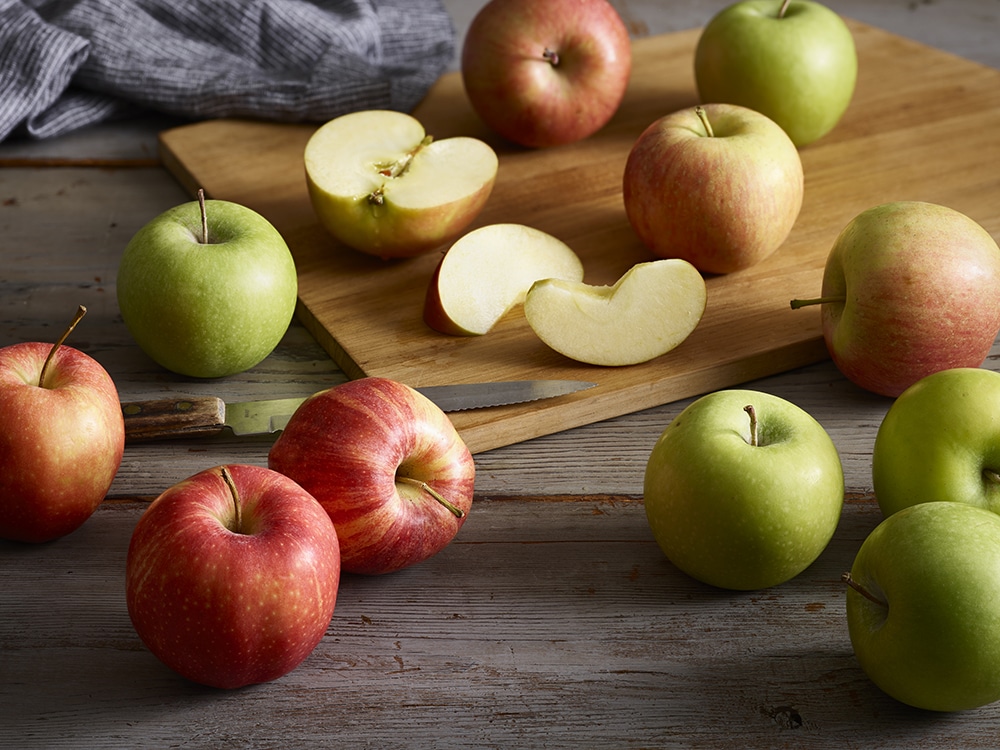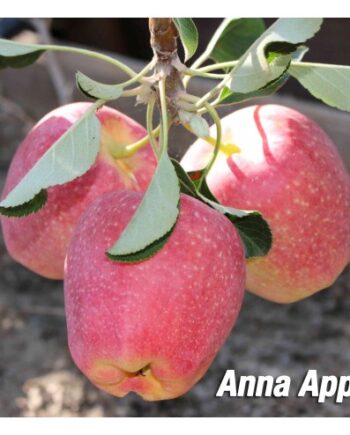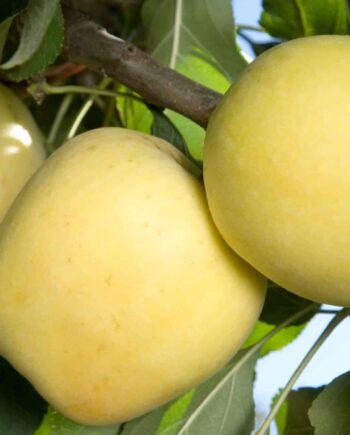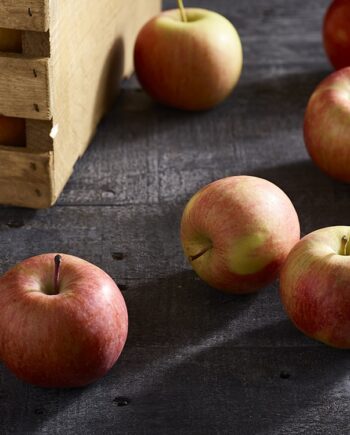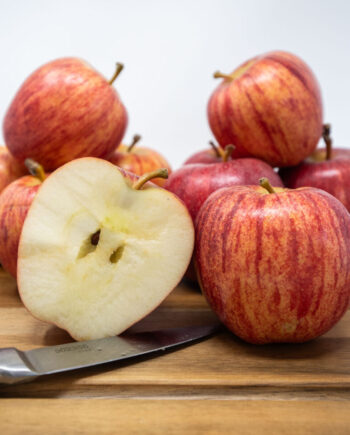Apple Trees
Showing all 7 results
-
Anna Apple Tree
Anna apple trees produce vertically stretched fruit with red skin and crisp, sweet, and juicy flesh. A very delicious and reliable variety for mild winter climates such as Southern Californi...Select options This product has multiple variants. The options may be chosen on the product page -
Beverly Hills Apple Tree
The Beverly Hills Apple is a medium sized apple that is both sweet and tart in flavor. The apples have pale yellow skin, with red blush and stripes. It is suitable in warm and cold climates ...Select options This product has multiple variants. The options may be chosen on the product page -
Dorsett Golden Apple Tree
The Dorsett Golden Apple Tree is a medium to large-sized apple with a taste comparable to a Golden Delicious Apple. It has yellow skin with a red-striped blush. The taste is sugary sweet and...Select options This product has multiple variants. The options may be chosen on the product page -
Fuji Apple Tree
Malus domestica 'fuji'The Fuji Apple tree produces sweet, crisp, and juicy fruits with red skin. They are medium to large in size and ripen in the Summer. Developed in Japan in the late 1930’s the...
Select options This product has multiple variants. The options may be chosen on the product page -
Gala Apple Tree
Malus domestica 'gala' The Gala Apple is currently the most popular apple in the United States. Originating in New Zealand, the Gala Apple was named “the Royal Gala” in honor of it being the favorite of Queen ...Select options This product has multiple variants. The options may be chosen on the product page -
Granny Smith Apple Tree
Malus domestica 'granny smith'Granny Smith Apple tree was discovered in 1868 as a seedling by “Granny” Anne Smith of Ryde, New South Wales. The Granny Smith Apples are known for their vibrant green skin...
Select options This product has multiple variants. The options may be chosen on the product page -
Pink Lady Apple Tree
The Pink Lady Apple has unique pink skin and a sweet-tart flavor. They stay fresh longer than other apples. It does well in hot summer climates and has beautiful white blossoms in the spring. The Pink Lady Ap...
Select options This product has multiple variants. The options may be chosen on the product page
Apple Trees Information and Care
Apple trees are winter deciduous, showcasing stunning white blossoms in spring and producing ripe fruit in summer. Despite shedding leaves in winter, these trees compensate with beautiful blooms and juicy fruit.
Fruit:
Apples are crisp, juicy, and often sweet. The smooth skin is rich in vitamins, while the small seeds are centered within. Varieties like Fuji, Gala, and Anna (ideal for mild winters) are popular. Granny Smith apples are known for their tart flavor. Apples are nutritious, flavorful, and store well.
Apple trees are easy to grow; keep them at a manageable size with regular winter pruning and summer thinning.
Key Care Tips:
Sunlight:
Plant in a location with 4-6 hours of direct sunlight daily. Partial shade is acceptable for the rest of the day.
Soil and Planting:
Use well-draining soil. Dig a hole as deep as the root system and twice as wide. Backfill with native soil mixed with planting mix, sand, and organic fertilizer. Create a well/bowl that contains the water and allows it to soak into the soil. Ensure good drainage with sand amendments or drainage pipes.
Size and Spacing:
Home orchards; space trees 10 feet apart and trim to 6-15 feet tall. Commercial farms; space 15 feet apart in 20-foot rows, growing up to 25 feet tall. In nature, trees can reach 40 feet.
Irrigation:
Discontinue watering in winter dormancy. Water new trees weekly in cooler seasons (none in winter) and 2-3 times per week in summer. Increase watering during heat waves. Established trees need less frequent irrigation.
Nutrition and Fertilization:
Fertilize with organic bloom food in winter to enhance blossoms and fruit. Use growth fertilizers in spring and summer to maintain healthy foliage.
History and Uses:
Apple trees, introduced to the U.S. in the 1600s by Johnny Chapman (Johnny Appleseed), are a staple fruit. They are versatile for eating fresh, cooking, juicing, and preserving.
Availability:
Potted apple trees are available year-round at our Los Angeles nursery. We offer delivery across Southern California.
In Conclusion:
Apple trees thrive in full sun or partial shade with well-draining soil. Keep them pruned to control size and enhance fruit production. Fertilize with steer manure in winter and use bloom-promoting fertilizers in spring. Can be eaten fresh from the tree, used in culinary and baking, juiced, dried, and also stores very well.
